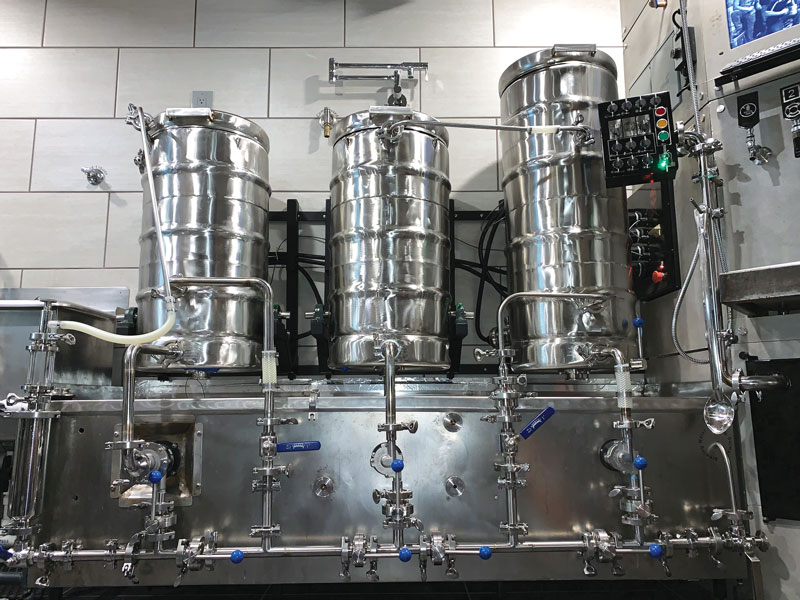Higher Alcohols
TroubleShooting
Matt Millward • Tucson, Arizona asks,
I recently started drinking mead that I brewed and have been aging for about a year. Some friends that I have let try it have mentioned that it smells like nail polish remover. As far as taste goes it tastes good and I would love to keep drinking it, however, I read an article in BYO that mentioned higher alcohols. I understand this process and it is quite possible this is the reason why my mead smells like nail polish remover. So my real question is can I safely keep drinking this mead or is it something I should pour down the drain? More directly, are fermented drinks that have higher alcohols safe to drink?
Before you dump your mead down the drain, please read my answer! The aroma you describe is the distinctive scent of ethyl acetate. This nail-polish smelling compound is the most common acetate ester found in beer for one very simple reason; ethyl acetate is formed during fermentation when ethanol is enzymatically coupled with the acetate moiety of acetyl-CoA (a key intermediate in the EMP Pathway). In general, an ester results when an organic acid and an alcohol combine in a condensation reaction. In fermentation, ester production is catalyzed by enzymes.
Esters are normal to fermented beverages and are responsible for much of the aroma derived during fermentation. Many people do not like beer, wine, mead, sake, etc. that has very strong ester notes. Certainly nail-polish remover is not something I want to take note of when I want to enjoy one of my beers. Other esters include isoamyl acetate, ethyl hexanoate and ethyl heptanoate just to name a few. These compounds contribute fruity aromas such as banana, pear drop, apple and cherry to the nose of fermented beverages. Most people associate esters with fruitiness and not solvents.
Higher alcohols, also called fusel oils, are totally different than esters. The name “higher” alcohol comes from the fact that these compounds have a higher molecular weight than ethanol, which is the most common alcohol formed during alcoholic fermentation. While ethanol is the result of glucose fermentation by yeast, higher alcohols are primarily the by-products of amino acid metabolism. Higher alcohols are often described as spicy, vinous and alcoholic.
One reason people speak ill of higher alcohols is because when they are present in high levels they lead to headaches and hangovers. During the distillation process it is desirable to remove higher alcohols by controlling which cuts from the still are collected. White distillates, like vodka, should be very pure, and anything collected except ethanol and water is pretty much avoided, although pure ethanol and water mixtures are usually not what you find in most bottles of vodka. Brown spirits like whiskey get much of their aroma from higher alcohols, and producing a super clean distillate is not the goal of these types of distillation operations. Indeed the equipment used, such as pot stills, Armagnac stills and Cognac stills, are not designed to produce pure distillates. So even if your mead was chock full of higher alcohols it still would not be cause for sending it to the sewer.
Higher alcohols can react with organic acids and their metabolic cousins that are attached to coenzyme-A to form esters other than ethyl acetate. Long chain fatty acids (a type of organic acid) are involved in lipid metabolism. When yeast cells are growing they must synthesize fatty acids

